What Is Thread Snips: Easy Guide To This Handy Sewing Tool
Hello, crafty friends! In sewing and crafts, sometimes the smallest tools make a big difference. Thread snips are one of these “small heroes.” Cutting threads neatly is a small detail that really makes finished items look better and more professional. Let’s find out all about this super handy tool!
1. What exactly are thread snips?
Thread snips are small cutting tools made just for cutting threads and thin yarn.
They are usually small enough to fit in the palm of your hand, much smaller than big scissors. Most thread snips don’t have finger loops like scissors. You just gently squeeze them to make a cut. Some feature a spring-action handle, meaning they automatically reopen after each squeeze.
They have very sharp blades, and the tips are often fine and pointy. Their sharp, pointy blades allow for this precision, helping you cut exactly where you intend. Their primary job is to cut threads very close to the fabric. This allows for cuts extremely close to the material without accidentally snipping the fabric itself, resulting in a very neat finish.
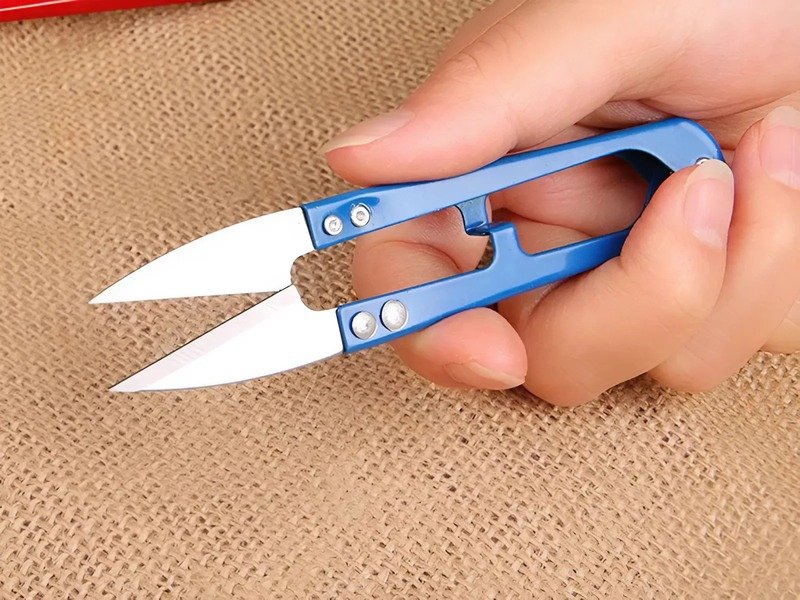
2. Why thread snips are awesome: the big benefits
Thread snips offer many advantages for your projects.
- Speed and efficiency: Thread snips are very fast to use! because you don’t have to put your fingers through loops, you can pick them up and snip much faster than with regular scissors, especially with many threads.
- Precision cutting: They are amazing at cutting threads very, very close to your fabric. This gives a really clean look and helps stop threads from fraying. leaving a smoother fabric edge.
- Professional finish: When you cut all the loose threads neatly, your handmade items look so much more professional. It’s a small detail that significantly elevates the professional appearance of handmade items. Why is cutting threads neatly important for my product? because it shows you care about quality!
- Easy to use: They are very simple. just a little squeeze is all it takes. This can be easier than opening and closing scissors for tiny cuts.
- Ergonomic design: If you cut many threads, thread snips can be less tiring for your hands than scissors. Some are spring-loaded, automatically opening after a cut, which adds to their comfort during repetitive tasks.
- Great for trimming and final touches: They are perfect for all those little trimming jobs and adding the final touches that make your project perfect.
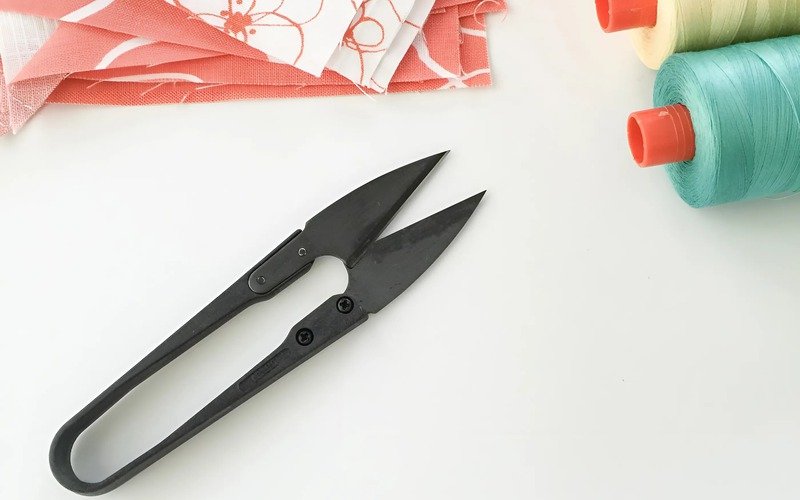
3. Thread snips vs. regular scissors: what’s the big deal?
You might be thinking, “Can’t I just use my small scissors?” Let’s see!
Primary use:
- Thread snips: are best for cutting single threads or thin yarn ends. They are great for quick snips in small or tricky places, like cutting jump threads in embroidery or at the end of a seam. When it comes to detailed work, thread snips often have the advantage over small scissors.
- Regular scissors: are best for cutting fabric, paper patterns, or thicker things. Their longer blades help cut straight lines or curves. They are not designed for quick, tiny thread cuts.
Design differences:
- snips: have short, very fine blades and often spring-loaded or easy-squeeze handles for precise, tiny cuts.
- scissors: have longer blades for cutting material, and finger loops for a good grip and more power.
Method of use:
- snips: You use a quick squeeze or pinch.
- scissors: You put your fingers in the loops and make a cutting motion.
When to pick snips, when to pick scissors:
- Use thread snips when: cutting threads at a seam’s end. trimming tiny embroidery threads. cutting a thread very close to fabric. making many quick thread cuts.
- Use regular scissors when: cutting fabric pieces. cutting paper patterns. cutting something thicker than a thread.
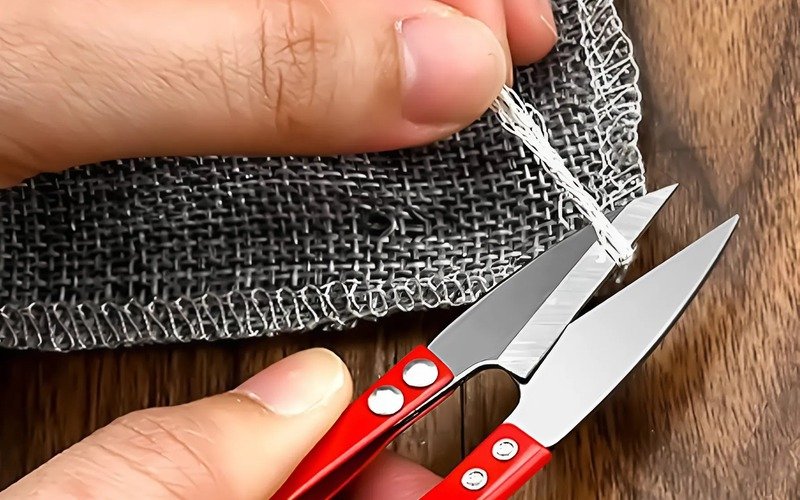
It’s not about one being definitively better, but about selecting the right tool for the specific task. While small trimming scissors can work for threads, thread snips are generally faster and provide a neater cut for this particular purpose.
| Feature | Thread Snips | Small Scissors |
|---|---|---|
| Best For | Single threads, close cuts | Fabric, paper, general small cuts |
| Blades | Short, fine, pointy | Longer, may not be as fine-tipped |
| Handle | Squeeze/pinch, often spring-open | Finger loops |
| Main Action | Quick snip | Controlled cutting motion |
4. Where do you use thread snips? lots of places!
Thread snips are useful in so many crafts! Here are some popular uses:
- Sewing apparel and other items: for anyone involved in sewing, whether making clothes or other fabric items, snips are indispensable. Use them for cutting threads at seam starts and ends, trimming threads on seam allowances, and clipping curves or corners.
- Embroidery: perfect for snipping ‘jump stitches’ in machine embroidery. They also clean up threads on the back of embroidery.
- Quilting: quilters use them to trim threads on quilt blocks, when attaching binding, and after machine quilting.
- Knitting & Crocheting: great for cutting yarn ends when changing colors or finishing. Some call them yarn nippers for this.
- Crafts: any craft using thread, string, or thin yarn can use thread snips. Think jewelry making, fly tying, or doll making.
- Achieving a professional finish: crucially, thread snips are key tools for garment finishing and product preparation. They help give your products perfect final touches.
Imagine you’ve just sewn your product and are ready to add your branding. Before you attach your amazing Packlove Woven Label or Heat Transfer Label, ensure no loose threads are around. Thread snips are perfect for trimming threads before putting on clothing labels. This ensures your Packlove woven labels, for example, look their best. They are essential tools for preparing garments for branding.
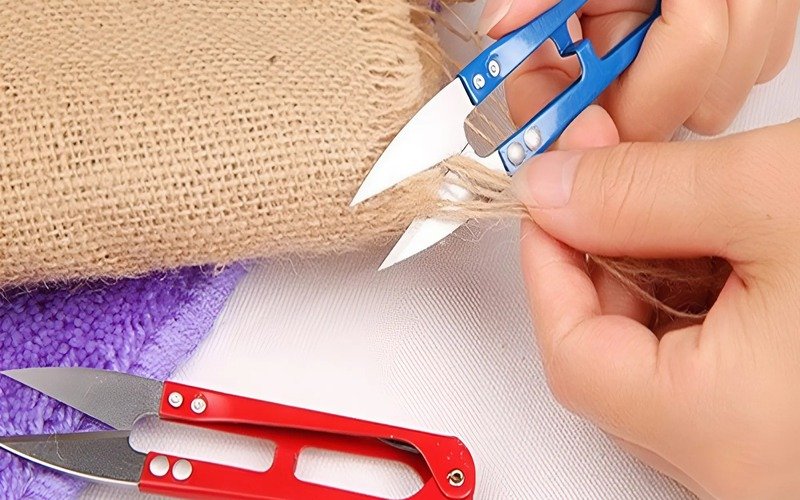
5. How to use thread snips the right way (it’s easy!)
Using thread snips is super easy! Here’s how:
- Holding them: hold most snips with a gentle pinch or squeeze between your thumb and forefinger (or other fingers, depending on comfort). Find what feels comfortable and gives control.
- Getting close: bring the blade tips right to the bottom of the thread. Get as close to the fabric as possible without touching it.
- The snip: give a quick, small, sure squeeze. You don’t need much force. Try not to pull the thread as you cut.
Being careful (safety first!):
- Remember, these snips are sharp! Keep your other fingers away from the blades.
- Store them safely when not in use. Some have a cap. If not, stick them point-down in a pincushion or keep them in a tool tray.

6. Picking good thread snips: what to look for
If you’re ready to get thread snips, look for these things:
- Sharp blades: this is paramount. Blades should be made from high-quality, durable metal like steel, ensuring they cut cleanly and last.
- Fine, pointed tip: look for snips with a fine, pointy tip. This helps get into small spaces.
- Comfortable grip (ergonomics): If you’ll be using them frequently, an ergonomic design that is comfortable to hold will help prevent hand fatigue.
- Good spring action (if they have one): If spring-loaded, check the spring feels smooth.
You don’t always need expensive ones. Look for a good balance of quality and price. These considerations will help you choose the best thread snips to perfect the details of your handmade items.
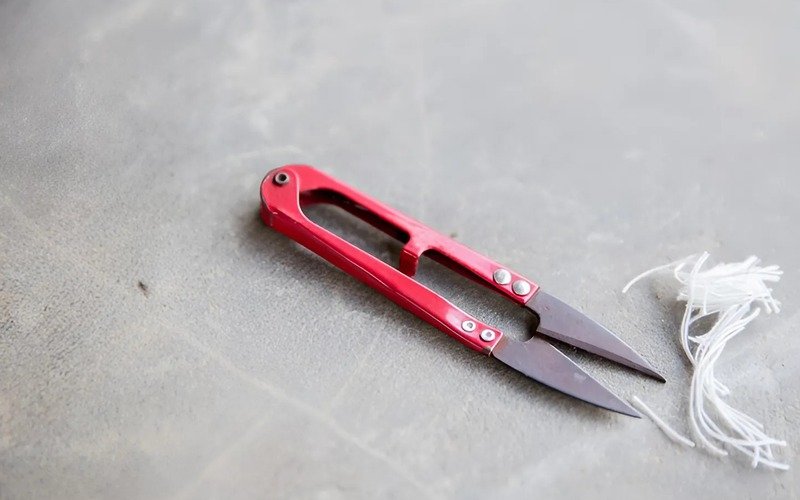
7. Why a neat finish is key for your awesome brand (Packlove angle)
Why is a neat finish so important for your brand?
Attention to detail reflects quality: when customers notice perfectly trimmed threads, it reinforces their perception of a high-quality product. This meticulousness is key to making handmade items look professional and highlights the care invested in your work.
Enhancing brand elements (Packlove focus): a clean product is a perfect stage for your branding. Your Packlove woven Labels, heat transfer labels, rubber labels (labels made from soft, flexible PVC or silicone, often used on outerwear or bags), or tags (cardstock or material pieces attached to products, often called hang tags) will stand out.
Shop-ready presentation: neatly finished items appear ‘shop-ready.’ Using thread snips is an integral part of product preparation. For Packlove users, snips are a key tool to ensure items are pristine, as clean garments require neatly cut threads.
Do I need thread snips for a branded look in my crafts? Absolutely! They contribute to the neat application of labels by ensuring the surrounding area is flawless.
At Packlove, we want your entire product to shine. That’s why MyPackLove.com shares tips for product branding preparation, because we know that cutting threads neatly makes products look significantly better. Our team has seen brands who pay attention to these details get better customer reactions.

8. Quick questions people ask (FAQs)
Here are answers to a few more common questions:
8.1. Can’t I just use small scissors?
You can try, but thread snips are often quicker and their fine tips usually get closer for a neater cut.
8.2. How do I keep my thread snips sharp?
Good quality snips stay sharp for a long time with normal use (avoid using them on paper!). Many less expensive types are often replaced when they become dull.
8.3. Are thread snips pricey?
Not usually! You can find good ones at affordable prices.
8.4. What’s another name for thread snips?
Sometimes people call them thread clippers, or for yarn, yarn nippers.
Read more:
So, there you have it! Thread snips are undeniably handy sewing tools. They are experts at cutting threads neatly and quickly. Remember, using them for those final touches makes your work look more professional. It’s amazing how such a tiny tool makes a big positive difference, especially when adding your unique Packlove labels or tags.
Taking care of these small details truly boosts the overall quality of handmade items. Ready to elevate your product presentation? Visit MyPackLove.com to explore our custom branding solutions!






















